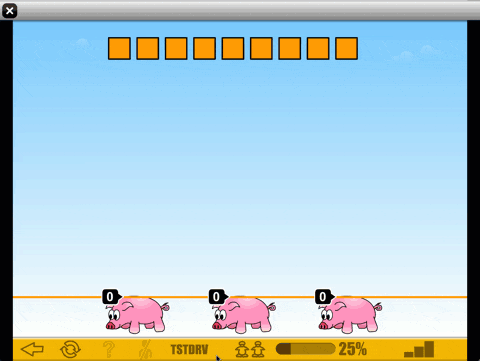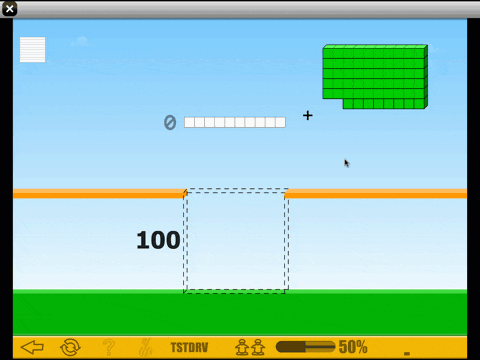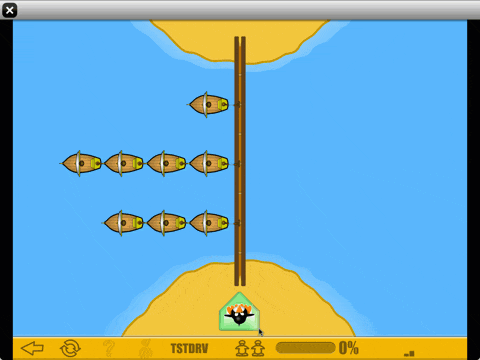I've been doing this teaching thing for a long time and finding resources that actively engage students in deep thinking are rare treasures. I’m encouraged by the shifts in the definition of math rigor, but making that a reality in the classroom is difficult. That's where ST Math classrooms can lead the way in transforming math education. Here, my students and I will share some examples of rigorous problem solving using ST Math.
Creating tasks that have a low floor and high ceiling makes rigorous learning available to all students. ST Math challenges students with animated virtual manipulatives that present word problems visually. This provides access for each student, regardless of skill level or language background, to develop math concepts through mastery-based learning—all without giving explicit directions or explaining procedures.
For example, in the Fair Sharing game, students explore a partitive division model by “sharing” blocks equally among a set of animals.

By not prescribing a way to solve these puzzles, students need to use their own existing schemas (a conceptual framework built on background knowledge and past experiences) to deepen their understanding about the concept of division. Watch how my ST Math students have figured out different ways to solve division problems with varying levels of abstraction. Listen to how they explain their thinking!
Now, comes the great part. Each of these students can share their strategy with the class and learn from each other. Teachers can help students make connections between the different strategies, apply the symbolic language of equations and properties, and explore the inverse relationship between multiplication and division. And because the conceptual understanding comes from the students themselves, motivation, learning, and retention are all high.
Our brain is hard-wired to learn by making predictions and trying them out. It’s when things don’t happen the way we think they will (a mistake happens) that we learn. Unfortunately, in school and especially in math, having the right answer the fastest is usually rewarded. This encourages students to give up their natural ability to problem-solve and make sense of things through the testing/feedback cycle and to resort to memorizing a series of meaningless steps. ST Math encourages productive struggle by learning from mistakes. It’s the informative feedback that makes the difference.
In this next game, Building Blocks, students must find how many more blocks are needed to make 100.

One of my students struggled with this game because he wasn’t seeing that the ten ones he created made another ten:
In the game, Which Parentheses, students are not so much learning that you do the operations in the parentheses first, but are learning what expressions with parentheses look like.

This game requires students to visually show the concepts of addition and multiplication and model how those expressions will “look” if the parentheses are in a different place.
By presenting concepts in a variety of contexts, students must transfer what they are learning from one game to another. In this game, Tug Boat, students are exploring the concept of equality. They must transfer their existing understanding of an equal sign (=) in an equation to a situation with boats.

Notice in the next video how my students struggle with deepening their understanding of equality and how JiJi the penguin and the animation in the ST Math game supports their learning.

Linda Himes has taught elementary and middle school students for over 36 years and was Director of Professional Development at MIND Research Institute.
Comment